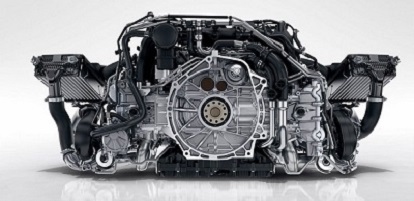
Best Engine for a Sport Car
Reading Time: 3 minutes
You are interested in sport cars and wonder to know which is the best engine to use as powertrain in a sport high end car and why?
At The Car Spec we are fans of beautiful and powerful cars and sometimes drive and test them on track.
On track it’s possible to experience top speed, high lateral acceleration curves and extreme brakes in the most safe way for the driver and passangers.
We know V6 and turbo charged 4 cylinder in line engines are also often used for sport cars.
We know V10 and V12 engines are the choice for high end and luxury powertrain applications.
There is no definitive answer to which engine type is the best for a sports car.
Different engines have different advantages and disadvantages depending on the design, performance, and preference of the driver.
However, there are two completely different configuration that are the most common and popular engine types for sports cars:
The first one is V8 engines
V8 engines: these powertrains have eight cylinders arranged in a V-shape, with four cylinders on each side.
V8 engines provide high value of torque, smooth operation, and distinctive sound.
They are often found in muscle cars, supercars, and luxury cars.
Some of the best V8 engines of all time are the Chevrolet Corvette ZR1’s 6.2-liter V81, the Mercedes-Benz AMG GT’s 4.0-liter twin-turbocharged V82, and the Ferrari 488 GTB’s 3.9-liter twin-turbocharged V83.
The second one that at The Car Spec is the best choice is the flat-six engine
Flat-six engines: These engines have six cylinders arranged horizontally in two rows, with three cylinders on each side. Flat-six engines are known for their low center of gravity, compact size, and high-revving nature. They are found in rear-engine or mid-engine sports cars, made by Porsche .
So let’s have a look at the reasons of technical specifications that make boxer six the best engine for a sport car.
The six-cylinder boxer engine used by Porsche has several technical specifications and benefits:
Technical Specifications:
- The engine is positioned in the rear of the chassis in 911 and in the middle in 718;
- Unlike most internal combustion engines that have vertical or almost-vertical piston strokes, the flat-six engine has horizontal pistons stroke allowing the opposing pistons to balance each other out, leading to smoother operation and higher revs output;
- The cylinder crankcase in aluminum is designed to ensure high structural stiffness and low cylinder distortion also under turbo-specific engine loads exceeding 500 Bhp;
- The crankcase includes the short stroked crank drive typical for the flat engine boxer with its horizontal, counter-rotating pistons;
- The boxer six engine is able to have perfect primary and secondary balance. As in other six-cylinder engines, the overlapping of the power strokes of the different cylinders (with a firing interval of 120 degrees in a four-stroke engine) reduces the pulsating of the power delivery relative to that of similar engines with fewer cylinders;
- The boxer six engine does not have a rocking couple. The symmetry of the arrangement, in which one bank of three cylinders is mirrored by the other bank, means that there is no net force from any given mirrored cylinder pair along the axis of movement of the pistons. So not only is there no net primary or secondary reciprocating effect, there is no net turning force moment that would try to rotate the engine back and forth about its engine mountings.
Benefits:
- Better handling as boxer is an extremely low height and compact size engine. This provides a lower vehicle center of gravity and a weight distribution over the rear wheels, resulting in better handling and contributing to greater stability and performance;
- Low level of vibrations, the boxer does not have rocking couple. This characteristic results in low vibration, especially when compared with the imbalances that are present in V6 engines with a 90-degree bank angle. Low vibrations means more driving pleasure and comfort even at maximum speed;
- Smoother engine, the opposing motion of the pistons within the engine case provides a smoother engine. The pistons fire opposing each other providing the reciprocating motion to balance each other out for better vibration control;
- Sound of the engine, the flat opposite cylinders provide a unique sound with higher bass tone exhaust sound. Sound of a boxer engine is often described as a low-pitched rumble or growl, with a pulsating or burbling quality. This unique and iconic sound is not only influenced by the cylinders opposite position but is also affected by other factors, such as the firing order of the cylinder, the ratio bore/stroke of the piston, the exhaust system, the intake manifold, and the engine speed.
For these reasons at The Car Spec we are passionate for boxer six cylinders engine. This powertrain reached almost perfection in Porsche latest production with displacement of 2,981 cc or 3,745 cc turbocharged and 3,996 cc aspirated, the powertrain of 718 and 992 models.



